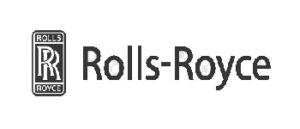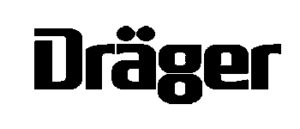Introduction
Holliday Fielding Hocking Ltd offer one of the UKs widest ranges of new and used fume cupboards, laminar flow cabinets and other local exhaust ventilated equipment. Based in Leeds in West Yorkshire, our team of fume cupboard technicians also offer full servicing and testing of all makes of fume cupboards to all laboratories, industry and educational establishments in the UK.
We are a specialist fume cupboards supplier and we have been providing UK laboratories with ducted fume cupboards and ductless fume hoods for over 5 generations.
From our factory in Yorkshire we offer full fume cupboard and laboratory fume hood purchasing, fume cupboard testing, fume cupboard maintenance and replacement parts for a vast range of fume cupboards. One call to Holliday Fielding Hocking Ltd can solve all of your fume cupboard needs.

In the fast-paced world of modern science, laboratories must keep up with the latest innovations and advancements to stay at the forefront of research. One essential piece of equipment that plays a crucial role in laboratory safety is the fume cupboard, also known as a fume hood or fume cabinet. However, when it comes to purchasing a fume cupboard, many lab managers face the challenge of determining the cost without an itemised breakdown or knowing whom to turn to in order to receive the best possible price and service.
Holliday Fielding Hocking Ltd can provide your laboratory with a cost sensitive solution for fume cupboard purchase and offer full financing for your purchase of a new fume cupboard or quality used and refurbished fume hood.
In this comprehensive guide, we will explore the factors that can affect the cost of fume cupboards and provide you with an understanding of the price ranges for different types and sizes of fume hood.
By the end of this article, you will have the knowledge and insights necessary to make an informed decision when budgeting for your lab's fume cupboard needs.
What is a Fume Cupboard?
A fume cupboard is a local ventilation device designed to protect lab personnel from hazardous airborne materials such as fumes, vapours, and dust. It consists of an enclosed workspace with a front opening, usually equipped with a glass panel or sash that can be raised or lowered. The primary objective of a fume cupboard is to contain and exhaust these harmful substances, preventing their dispersion into the laboratory environment.
Types of Fume Cupboards
There are two main types of fume cupboards: ducted fume cupboards and ductless fume cupboards. Each type has its own advantages, disadvantages, and cost considerations. For the best possible advice and guidance, please reach out to Holliday Fielding Hocking Ltd.
Ducted Fume Cupboards
Ducted fume cupboards are the most common variety, relying on a ventilation system that draws air from the laboratory space and exhausts it outside through ductwork, usually venting onto a roof or side of a building.
The conditioned air is continuously replaced to maintain a safe working environment in the laboratory. Ducted fume cupboards offer the following benefits and considerations:
Benefits of Ducted Fume Cupboards
- No need for filters, reducing ongoing maintenance and replacement costs.
- Effective removal of fumes and contaminants, ensuring high air quality within the lab.
Considerations for Ducted Fume Cupboards
- Limited flexibility in placement due to the requirement for proper ductwork and adherence to building codes.
- Higher initial purchase cost and labour costs associated with installation.
- Increased energy consumption compared to ductless fume cupboards, resulting in higher utility bills. Although with the latest blowers and invertors, energy efficiency has been greatly improved in ducted fume cupboards over the last few years.
Ductless Fume Cupboards
Ductless fume cupboards, also known as recirculating fume cupboards or filtered fume cupboards, utilise filters to purify the air within the enclosure before recirculating it back into the laboratory.
The filters must be specifically chosen to effectively remove the hazardous materials present. Ductless fume cupboards offer the following benefits and considerations:
Benefits of Ductless Fume Cupboards
- Lower initial purchase cost compared to ducted fume cupboards.
- Greater flexibility in placement as they do not require external ductwork.
- Lower labour costs for installation, as they involve fewer specialised professionals.
- Reduced energy consumption compared to ducted fume cupboards, resulting in lower utility bills.
Considerations for Ductless Fume Cupboards
- Ongoing expenses for filter maintenance, replacement, and disposal.
- Limited ability to achieve 100% pure air due to the recirculation process.

Factors Affecting the Cost of Fume Cupboards
The cost of a fume cupboard can vary significantly depending on several factors. Understanding these factors will help you budget accurately for your fume cupboard installation.
Let's explore the key elements that influence the cost:
1. Size and Type of Fume Cupboard
The size and type of fume cupboard you choose will have a direct impact on the cost. Benchtop style fume cupboards, which are smaller and more common, generally have a lower base cost compared to walk-in style fume cupboards. The complexity of manufacturing processes and additional features, such as double sash arrangements and structural rigidity, contribute to the higher base cost of walk-in fume cupboards.
2. Carcass Materials
The materials used to construct the fume cupboard carcass can significantly affect the cost. Traditionally, fume cupboards have been built from coated mild steel due to its low cost and ease of production. However, mild steel has a shorter lifespan and lower corrosion resistance compared to other materials. Stainless steel, although more expensive and challenging to work with, offers better corrosion resistance and longevity. Polypropylene, a newer technology, provides improved longevity and sustainability but comes at a higher initial cost.
3. Lining Materials
Some fume cupboards feature internal linings to enhance longevity and corrosion resistance. The most common lining materials include High-Pressure Laminate (HPL), glass, and polypropylene. HPL is a cost-effective option with better chemical resistance than coated mild steel, but it requires sealant and can deteriorate over time. Glass offers good chemical resistance but is fragile and prone to etching with certain chemicals. Polypropylene provides the best chemical resistance but requires sealant and has a limited lifespan.
4. Control Systems & Safety Features
The control system and safety features of a fume cupboard also contribute to its overall cost. Basic control systems include airflow alarms and monitoring, while more advanced systems offer features like variable air volume control, service timers, multistage alarm systems, and calibration control. The complexity of the control system will impact the price, and it's essential to consider the needs of lab technicians, facilities management teams, and external contractors who will interact with the controls.
5. Installation Requirements
The installation process of a fume cupboard can be complex and dependent on various factors such as the distance from the fume cupboard to the fan, fan positioning, lab location within the building, and whether the fume cupboards are on a dedicated system or a common extract system. Installation costs can vary significantly based on these factors, and it is advisable to consult experts such as Holliday Fielding Hocking Ltd for accurate costs.

Price Ranges for Fume Cupboards
While the exact cost of a fume cupboard will depend on various factors and customisation options, we can provide you with a general price range based on common fume cupboard sizes. It's important to note that these ranges are approximate and are subject to change without notice:
- 4-foot Fume Cupboard:
- Low-Price Average: £5,263
- High-Price Average: £24,602
- 6-foot Fume Cupboard:
- Low-Price Average: £7,979
- High-Price Average: £56,809
- 8-foot Fume Cupboard:
- Low-Price Average: £9,966
- High-Price Average: £66,383
It's crucial to consider your specific requirements, including size, materials, and additional features, to obtain a more accurate estimate for your fume cupboard installation.
Ways to Reduce Fume Cupboard Costs
While fume cupboards are essential for laboratory safety, there are ways to mitigate costs without compromising on quality. Here are some strategies to consider:
1. Constant Air Volume (CAV) vs. Variable Air Volume (VAV) Systems
Consider implementing a VAV system if you currently have a CAV system. VAV systems reduce the exhaust rate when the fume cupboard is not in use, resulting in lower energy costs. This switch can potentially decrease energy expenses by up to 75%.
2. Lowering the Sash
Train lab personnel to lower the fume cupboard sash when not in use. This simple practice can significantly reduce energy consumption and lower utility bills. Posting signs or using catchy reminders can help reinforce this cost-saving habit.
3. Optimise Ventilation Rates
Consult ventilation experts to analyse your current ventilation rates and ensure they align with the specific chemicals used in your lab. Optimising ventilation can lead to more efficient airflow and reduced energy costs.
Conclusion
In conclusion, the cost of a fume cupboard can vary depending on factors such as size, type, materials, and additional features.
Ducted fume cupboards have a higher initial purchase costs but they are very effective at removing fumes and contaminants, ensuring high air quality within the lab and they have lower consumable costs because they do not use filters. Ductless fume cupboards have lower upfront costs and offer greater flexibility in placement and lower energy consumption but they have higher consumables costs because of the use of replacement filters.
By considering these factors and implementing cost-saving strategies, such as VAV systems and sash lowering, you can make informed decisions and optimise your budget for fume cupboard installations.
Remember, the prices provided in this guide are approximate and subject to change. It's always recommended to consult with reputable suppliers and manufacturers to obtain accurate quotes based on your specific requirements.
With this comprehensive guide, you are now equipped with the knowledge to navigate the world of fume cupboards and make informed decisions for your laboratory's needs.
For more information and assistance in selecting the right fume cupboard for your facility, feel free to reach out to our team of experts at Holliday Fielding Hocking Ltd.
We offer one of the UKs largest stock of new and used fume cupboards and other local exhaust extraction and can offer a full design, install and commissioning service plus ongoing yearly maintenance and testing and a vast array of parts including replacement carbon activated and HEPA filters for ductless fume cupboards.
HFH also stock a range of quality used fume cupboards that can dramatically reduce your capital outlay costs which come fully warrantied and guaranteed from a fume cupboard specialist with over 70 years experience in serving the UKs laboratory, industrial and educational sectors.
Call HFH Today on: +44 (0)113 245 4111 or click here to request a call back.
Useful Links
Holliday Fielding Hocking Ltd > Our Products
Holliday Technical Services > Fume Cupboard Testing
Wikipedia > Fume Cupboards




